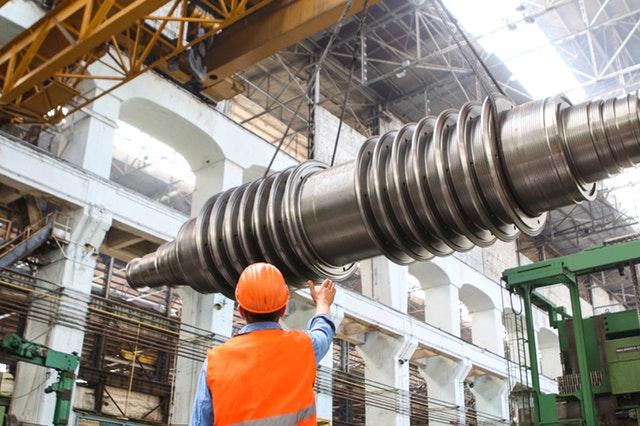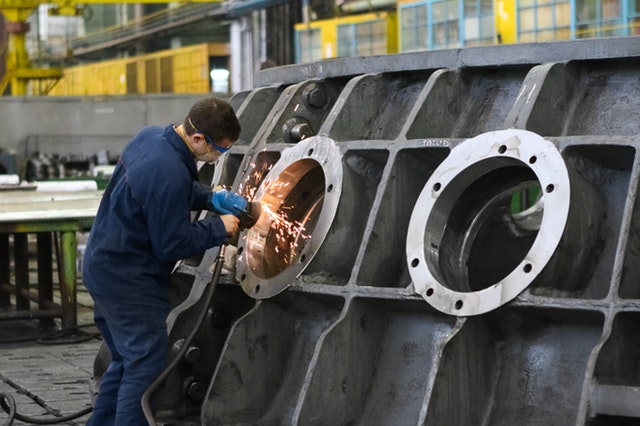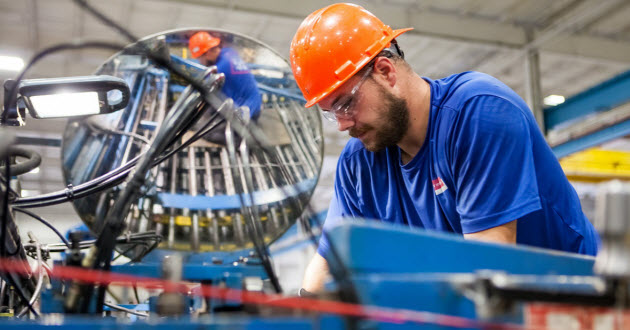Cost Saving Ideas: Manufacturing Industry
Running a business in manufacturing is no small feat. Like any business, you have to ensure that you have a decent profit margin and we all know that inefficiencies can sabotage even the best business forecasts. The good news is, there are measures that you can take to make your business more efficient and thus increase your savings to protect your profit margin. In this article we'll discuss some cost saving ideas manufacturing companies can use to improve margins and eliminate waste.
Lean manufacturing focuses on seven key areas of loss: overproduction, inventory, transportation, correction, ergonomics, process, and waiting.
Let's take a look at some of these areas and share some cost saving ideas manufacturing companies can put into action.
Improve Inventory Management & Reduce Material Waste

Overproduction and inventory overlap a bit as both describe loss due to manufacturing too much of a product.
In one case, that product takes up space when it is stored, and in the other case it has to be sold at a discount, thus compromising your margins.
An employee skilled in materials management can help you effectively utilize your supplies and minimize waste by purchasing only what you need and making sure to keep up with demand so that your employees are never left standing around due to lack of essential materials.
It is equally important to track inventory so as not to make more of a product than needed or purchase unnecessary materials.
When it comes to buying raw materials, look for vendors that offer discounts for loyal customers or bulk purchases. Finding cheaper raw materials can help to pad your profit margins, but you must also make sure that you are not compromising on quality. Having a reputation for faulty products can lead to your customers looking elsewhere and ultimately end up hurting your bottom line even more than poor management of inventory.
Related: How Suitebriar helped West Liberty Foods cut costs and improve operational efficiency
Improve Transportation Efficiencies

Consider not only what materials you need to manufacture your product, but also the materials you use to pack and ship your product.
While it’s certainly important to properly protect your product in transit, many folks are shifting towards more sustainable and eco-friendly companies for packing and shipping solutions. If you can find packaging solutions that are more efficient, environmentally friendly, and which remain effective in transport, you've found a tremendous cost saving idea for your manufacturing company.
Transportation losses can also include moving the product around too many times whether it is within your plant, between warehouses, or otherwise.
This wastes time, resources, and can also increase the risk of damage to your inventory. Minimize the amount of time and distance that your product has to travel to avoid losses in this area.
Finally, the cost of transporting your product to its final destination is another area where you can save on costs. Depending on the product you manufacture, it’s important to closely consider the options of managing your own deliveries using an in-house service compared to outsourcing transportation with external delivery agencies. There is also the comparison between each external delivery agency based on the cost of the service and the type of service you receive. Evaluate both your internal cost, and the delivery service you're providing to your wholesale and retail customers.
Related: How to Reduce Operating Expenses in Business
Don't Underestimate Skilled Labor

One of the biggest costs of manufacturing is the cost of labor. It may be tempting to replace skilled workers with unskilled workers that you can pay lower wages, but consider how much more efficient skilled workers are. Unskilled workers are more likely to do things awkwardly and inefficiently, which also increases the risk of injury and worker's compensation claims. Skilled workers cut down on the amount of time needed to complete a project, create less waste, and make fewer mistakes. They typically also have thorough knowledge of the job that could end up being helpful in making suggestions to further improve processes.
Added incentives such as profit sharing and bonuses for reaching targets can be effective ways to encourage efficient and detail-oriented work. With profit sharing, your employees are more invested in the process because your loss is their loss too.
When you align your business interests with the financial interests of your labor force, you position your company for growth.
Proper workplace ergonomics are important to preventing loss of employees due to injury as well as the costs associated with workplace injury compensation. While it requires an up-front investment (known as a capital investment in this case) developing and installing machinery for skilled workers to expedite the process can also help save on labor costs in the long run.
Machinery and automation can help make things move much quicker and can help prevent injury, often making it a worthwhile cost that will save you money in the long run. These investments can also help you attract and retain skilled workers who prefer a quality work environment.
Even more simple and less expensive ergonomic tools such as height-adjustable workstations that minimize the need for bending over, assisted lift devices to prevent lifting injuries, and conveyors or transportation (i.e. carts, wagons, forklifts, etc.) to move stuff around the plant without having to carry items around the manufacturing floor can all help to prevent the most common workplace injuries, saving you money in the long run.
Reduce Downtime

Waiting is essentially any time that is spent in limbo doing nothing productive. Downtime can infiltrate virtually every aspect of the manufacturing process, and eliminating this area of waste can be one of the most effective cost saving ideas for manufacturing companies to focus on.
Waiting for any part of the process can lead to losses. Waiting wastes time, which wastes money and this can mean decreased output of product along with numerous other implications depending on the product you are manufacturing.
Downtime could be due to not having enough of a certain material in order to proceed with production. It could be because of equipment repairs without having a backup plan to keep your employees busy in another area of the factory floor. It could include waiting for an email, a meeting, for someone to send documents, and more. Downtime caused by inefficiencies in your workflow process can and will seep into every aspect of your manufacturing business, and will ultimately lead to preventable losses, and waste.
So how can you avoid waiting? The key solution is to have effective processes - more on that below.
Improve Workflow Processes

A lot of loss can happen when you have inefficient processes and a need for corrections. Inefficient processes can waste raw materials as well as time, which ultimately wastes money when you are paying employees on an hourly basis.
Corrections can include having to correct a product, having to re-do parts of the manufacturing process, or the time required for inspections.
Technology can be the saving grace for integrated and synchronous processes that cut down on wasted time, wasted materials, and the need for corrections. Many traditional software suites were just not built to be future-proof, and the time to upgrade to software that makes you more efficient (instead of slowing your business processes down) has come.
In this day and age we are more frequently looking for programs that work synergistically with one another and allow for real-time collaboration even from opposite ends of a warehouse or manufacturing plant, or across multiple locations around the country and world. If transitioning to an entirely different software suite seems intimidating, rest assured that there are companies (like ours) that specialize in transitioning you to the cloud and providing training to your entire organization to ensure that you get the most from your investment in AI and cloud-based technology.
G Suite is our favorite solution for manufacturing companies. For a low monthly fee, you'll enjoy benefits such as:
- Unlimited Cloud storage
- Synchronous operations by working from the Cloud - access all of your documents anytime and anywhere
- Keep everyone on track with Google Calendar systems to share deadlines and more
- Increase efficiency by using Google Hangouts for impromptu video conferencing with suppliers, site managers and wholesale customers no matter where you are in the warehouse (or the world)
- Maintain up-to-date inventory databases in the Cloud for your sales reps and supply chain managers to access anytime, anywhere
- And so much more, as shown in this short video:
Cost Saving Ideas Manufacturing Companies Can Actually Use

A lot of cost savings in the manufacturing industry comes from increasing efficiency to minimize time wasted.
When employees are waiting in limbo for the next step of the process, for materials, for documents, and more, then you ultimately lose money in labor costs while also decreasing your product output.
Having an integrated, modern, cloud-based office suite solution is a key part of maintaining an effective process and cutting down on wasted time. G Suite can help to ensure the appropriate amount of supplies are available for production, track real-time information on inventory to prevent overproduction, keep everyone on-task, help with shift scheduling, minimize travel time for meetings or waiting time for email responses, and more.








